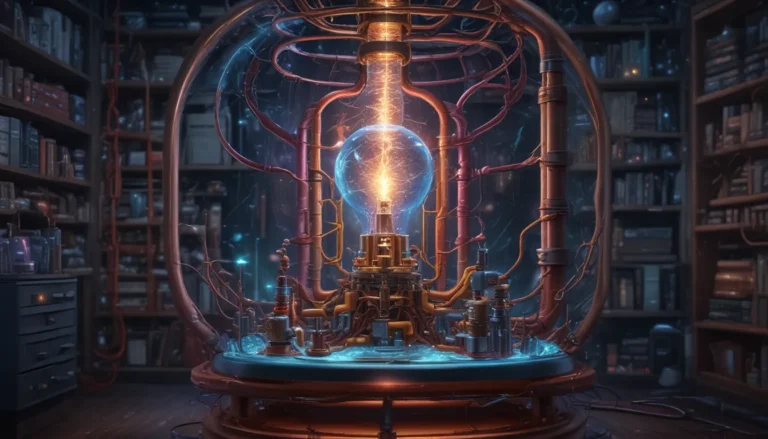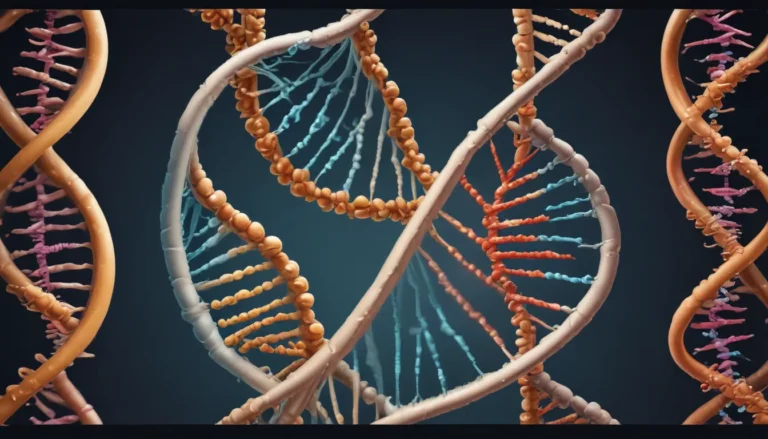A Note About Images: The images used in our articles are for illustration purposes only and may not exactly match the content. They are meant to engage readers, but the text should be relied upon for accurate information.
Nuclear binding energy is a pivotal concept in the realm of nuclear physics that dictates the stability and properties of atoms. This energy is the force that holds atomic nuclei together, shaping everything from the elements on the periodic table to the operation of nuclear reactors. Delving into the intricate world of nuclear binding energy can unearth a treasure trove of knowledge that transcends various fields, including energy production, nuclear medicine, and even weaponry.
Unveiling the Essence of Nuclear Binding Energy
Nuclear binding energy is the gravitational force that binds the nucleus of an atom, a phenomenon critical for understanding the elements in the periodic table and handling nuclear waste challenges.
The Crucial Iron Element: Epitome of Stability
Iron stands out as the most stable element due to its peak binding energy per nucleon, exemplifying the pinnacle of nuclear energy stability.
The Marvel of Fusion: Unleashing Binding Energy
Nuclear fusion involves the fusion of lighter atomic nuclei into heavier ones, converting excess mass into binding energy in line with Einstein’s iconic equation E=mc².
The Splendor of Fission: Fragmenting Nuclei
Contrastingly, nuclear fission entails the splitting of heavy atomic nuclei, such as uranium-235, into smaller fragments, liberating substantial binding energy in the process.
Powering the World: Nuclear Fission in Action
Nuclear power plants operate by harnessing the energy generated from nuclear fission reactions within their cores, serving as a vital source of electricity.
Unraveling the Mass Defect Mystery
The mass defect, a discrepancy between total nucleon mass and nucleus mass, drives the release or absorption of binding energy within atomic structures.
The Guardian Force: Strong Force and Stability
The robust nuclear force, or strong force, acts as the cohesive agent for uniting protons and neutrons within the nucleus, ensuring atomic stability.
A Celestial Dance: Sun’s Energy and Binding Energy
Within the sun’s core, fusion reactions transmute hydrogen into helium, yielding copious binding energy that fuels the sun’s radiant energy emission.
Isotopes Unveiled: Varied Binding Energies
Isotopes of an element exhibit nuanced binding energies stemming from neutron count discrepancies within their nuclei.
Stability Defined: Binding Energy’s Role
Atom equilibrium hinges on their binding energies, with higher values denoting enhanced stability while lower figures indicate susceptibility to radioactive decay.
Healing with Energy: Nuclear Medicine’s Prowess
Nuclear medicine harnesses binding energy’s emissions, facilitated by radioactive isotopes’ decay, for therapeutic applications via gamma ray emission.
Unveiling the Power of Mass Defect: Explosive Revelations
In the realm of nuclear weapons, the liberation of copious binding energy from fission or fusion reactions culminates in devastating explosive outcomes.
Harmonizing Elements: Binding Energy and the Periodic Table
Binding energy serves as a cornerstone for elucidating element stability and arrangement on the periodic table’s intricacies.
The Luminary Role: Nuclear Reactors and Binding Energy
Nuclear reactors orchestrate the controlled release and utilization of binding energy to serve as a sustainable electricity source across diverse sectors.
The Daunting Challenge: Nuclear Waste and Binding Energy
Managing and disposing of nuclear waste pose formidable challenges due to the extended half-lives and robust binding energies of radioactive isotopes.
In essence, these 14 captivating facts about nuclear binding energy shed light on its pivotal role in deciphering atomic stability, nuclear reactions, and energy generation. From the mundane operations of nuclear power plants to the celestial fusion in the sun’s core, binding energy emerges as a cornerstone in shaping our technological landscape.
Delving Deeper: The Enigmatic Realm of Nuclear Binding Energy
Embarking on a journey through nuclear chemistry unveils the mesmerizing aspect of binding energy, unraveling the intricacies of atomic stability and energy discharge. The exploration of these extraordinary facts not only enriches our comprehension of universal forces but also portends groundbreaking scientific revelations and advancements in the offing.
Concluding Notes
Nuclear binding energy stands as a magnetic force that captivates scientists and researchers, offering a tantalizing vista into the dynamics of nuclear reactions and energy manipulation. Through a deep dive into the realms of mass-energy interplay and binding forces, a rich tapestry of knowledge unfolds.
Frequently Asked Questions
Q: What precisely is nuclear binding energy?
A: Nuclear binding energy denotes the energy required to secure an atom’s nucleus and counteract electromagnetic proton repulsion within it.
Q: How is nuclear binding energy computed?
A: Nuclear binding energy calculations entail deducting the combined nucleon masses from the actual atom mass, and then applying the square of the speed of light in Einstein’s equation (E=mc²) to convert this difference into energy units.
Q: What factors influence nuclear binding energy?
A: The number of protons and neutrons in the nucleus, termed the mass number, alongside the nucleon type, are pivotal factors dictating nuclear binding energy. Intermediate mass number nuclei typically exhibit peak binding energies.
Q: How does nuclear binding energy correlate with nuclear reactions?
A: Nuclear reactions entail either release or absorption of nuclear binding energy. Fusion reactions culminate in the release of immense energy, stemming from lighter nuclei fusion, while fission reactions result in energy release as heavy nuclei fragment.
Q: Can you elucidate practical applications of nuclear binding energy?
A: Nuclear binding energy forms the bedrock of nuclear power generation, with energy produced from nuclear reactions being channeled into electricity. Additionally, nuclear medicine leverages binding energy for therapeutic applications, such as targeted radiation in treating diseases.
Stimulating Further Exploration
The revelations surrounding nuclear binding energy serve as a launchpad for deeper forays into nuclear reactions and atomic phenomena. Discover more enthralling facts in our companion articles: “19 Astonishing Facts About Nuclear Chemistry,” “13 Unbelievable Facts About Nuclear Fusion,” and “18 Intriguing Facts About Nuclear Physics.” Delve into the enigmatic realms of science and unravel the mysteries that underpin our universe’s grand tapestry.
Reflecting on Our Commitment
Our dedication to presenting veritable and engaging content remains steadfast, with each fact sourced from contributors like you, ensuring a diverse and credible informational reservoir. Our tireless editors meticulously scrutinize each submission to uphold the highest standards of accuracy and reliability, ensuring that the facts shared resonate with both fascination and credibility. Trust in our unwavering pledge to quality and authenticity as you traverse the realms of knowledge with us.






